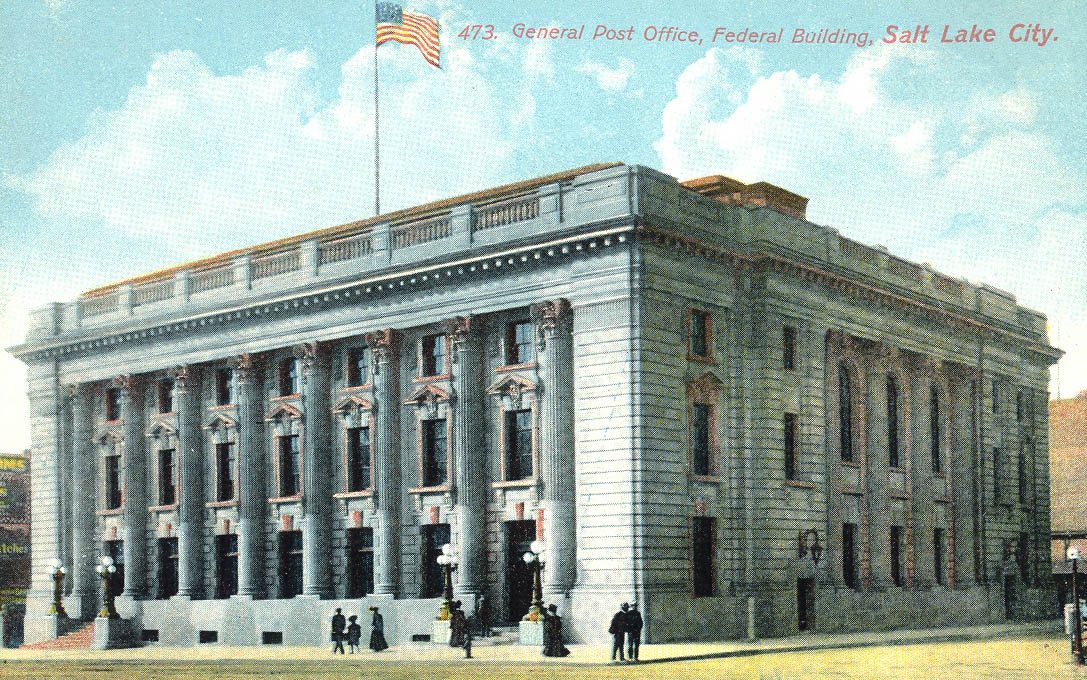Building History
The Courthouse was listed on the National Register of Historic Places in 1978, the building has five principal floor levels as well as a basement, and will serve as a Federal Bankruptcy Courthouse and Federal Office Building.
The Frank E. Moss US Courthouse (Moss) is a contributing structure in the Exchange Place Historic District of downtown Salt Lake City (District), designed in the Neoclassical Revival style. The building was originally designed by Supervising Architect of the Treasury, James Knox Taylor, and constructed in 1905 serving as a Federal Courthouse and US Post Office. The structure was expanded to the west in 1912, enclosing the “U” shaped structure. In 1932 the building was expanded to the south, almost doubling the structure in size and mimicking the central lightwell configuration of the 1905 and 1912 structure. The Courthouse was listed on the National Register of Historic Places in 1978. The building has five principal floor levels as well as a basement, and will serve as a Federal Bankruptcy Courthouse and Federal Office Building.
The buildings built between 1903 and 1917 in the District represents Salt Lake City’s second major commercial district. The District was created as a direct outgrowth of the rapid development of Utah’s mining industry during the last quarter of the nineteenth century. The impressive commercial architecture in the district reflects the way large amounts of wealth produced by Utah mines were used to build up Salt Lake City. Exchange Place played an important role in the growth of Salt Lake’s economy and documents an important commercial rivalry between Gentile (non-Mormon) capitalists and the Mormon financial community, each of which was polarized in a separate commercial district.
The Moss is the oldest building in the district and serves as the visual terminus for Exchange Place. The District grew up around the building inasmuch as it represents the Federal presence in Utah after it gained statehood. The building is significant architecturally for introducing the heretofore unknown Neoclassical Revival style to Utah, a governmentally promoted style which found its way into commercial, religious and residential architecture in Utah after 1903.

Because the Frank E. Moss Courthouse is a contributing element to the Exchange Place Historic District, GSA must consider the effects of this project on the building, per the National Historic Preservation Act of 1966 (NHPA), as amended. The NHPA established a program for the preservation of historic properties throughout the United States for Federally funded actions.
In compliance with NHPA, GSA has initiated the Section 106 process to evaluate the effects of the proposed seismic upgrade and building renovation to the building. As part of the Section 106 process, GSA is in ongoing consultation with the Utah State Historic Preservation Office (SHPO), Salt Lake City Landmarks Commission, and Utah Heritage to ensure the long-term preservation of this important landmark to Salt Lake City. We are happy to share information on this important project that will seismically stabilize and modernize this Salt Lake City landmark for the future.